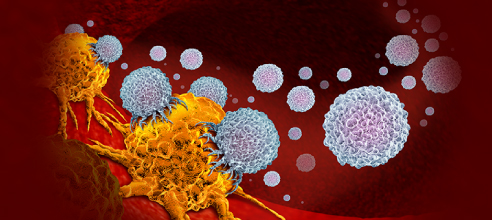Currently, can phage display technology successfully replace hybridoma technology?
PHAGE DISPLAY TECHNOLOGY
Phage-display technology was pioneered by George Smith in
1985. It is a powerful method for engineering proteins with
desired binding specificities.. Phage display technology has
been used to isolate recombinant antibodies with specificities
for autoantigens with potential therapeutic
and/or diagnostic utility. To date, phage
display methods have provided approximately 30% of the 140
monoclonal antibodies currently in clinical development . The most clinically
advanced human antibody derived using phage display is the
D2E7 tumor necrosis factor alpha (TNFα) antibody currently
awaiting approval by the Food and Drug Administration for
the treatment of rheumatoid arthritis.
Unlike infliximab (Remicade, Centocor, Malvern, PA), a
chimeric human/mouse TNFα antibody obtained by
hybridoma technique, D2E7 is fully human, having been
derived from a “synthetic” phage display library, the method
for which is described below. In transfusion medicine, most
applications of antibody phage display have focused on the
isolation of human and murine antibodies to human red cells and platelets . More recently,
hematologic applications have expanded to include the
cloning and analysis of human antibodies to clotting factors and abnormal
white cells.
HYRIDOMA TECHNOLOGY
Hybridoma technology has contributed to virtually all areas
of biology and medicine and has been greatly refined since its
introduction in 1975. The two scientist, Georges Kohler of
West Germany and Cesar Milstein of Argentina, who jointly
with Niels Jerne of Denmark were awarded the 1984 Noble
prize for physiology and medicine. Generally, the production
of one MAb, using the hybridoma technology, costs between
$8,000 and $12,000. In the early days,
approaches to produce hmAb included the hybridoma
technique, based on the fusion of antibody-producing human
B lymphocytes with either mouse or human myeloma or
lymphoblastoid cells; ) or the EBV immortalization technique,
based on the use of Epstein–Barr virus (EBV) to
‘immortalize’ antigen-specific human B lymphocytes Each method has its advantages and
drawbacks. Antibody secreting hybridomas
are derived from a fusion of myeloma cells that can grow
indefinitely and an immune B lymphoblast that expresses a
specific antibody gene. Attempts to use the hybridoma
technology for generating hmAbs have been hampered by the
lack of a suitable human myeloma cell line. The best results
were obtained using heteromyelom as fusion partners.
Alternatively, human antibody-secreting cells can be
immortalized by infection with the EBV.
CONCLUSION
The promises of Hybridoma technology and its drawbacks have been documented and a better alternative, that is the Bacteriophage display technology which utilizes recent advancement in recombinant DNA technology to produce human monoclonal antibody with higher affinity and avidity presented. Review of advances in phage display technology and its limitations is needed to explore its emerging potential applications
The promises of Hybridoma technology and its drawbacks have been documented and a better alternative, that is the Bacteriophage display technology which utilizes recent advancement in recombinant DNA technology to produce human monoclonal antibody with higher affinity and avidity presented. Review of advances in phage display technology and its limitations is needed to explore its emerging potential applications
Reference: https://www.researchgate.net/publication/281641259_Phage_Display_Technology_As_A_Strong_Alternative_To_Hybridoma_Technology_For_Monoclonal_Antibody_Production
- Like (7)
- Reply
-
Share
Reply
About Us · User Accounts and Benefits · Privacy Policy · Management Center · FAQs
© 2025 MolecularCloud




